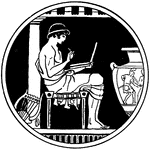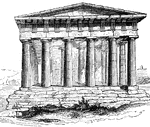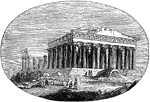
Modern Parthenon
"The Athenians, on their return to Attica, after the defeat of the Persians, found their city ruined…
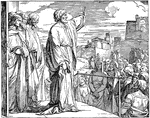
Paul Preaching on Mars' Hill
"Then Paul stood in the midst of Mars' hill, and said, Ye men of Athens, I perceive that in all things…

Pericles
"So long as Pericles stood at the head of Athens in time of peace, he governed it with moderation and…

Bust of Pericles
"The enormous influence which Pericles exercised for so long a period over an ingenious but fickle people…
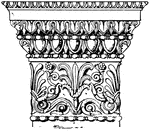
Greek Doric Pilaster Capital
The Greek Doric pilaster capital is found in the ancient Greek temple of Erechtheum in Athens. It has…
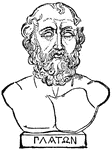
Bust of Plato
"Plato was born in Athens in 429 B.C., the year in which Pericles died. His first literary attempts…

Pnyx
"Shows the bema, or platform, from which orators addressed the assembled citizens."—Webster, 1913

Propylea restored
"A. Pinacotheca, B. Temple of Nike Apteros, C. Pedestal of Agrippa, D. Road leading to the central entrace,…
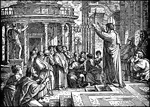
Saint Paul Preaching at Athens - the Areopagus Sermon
This illustration of the painting by Raphael has been inverted. The painting is a cartoon created for…

Bust of Socrates
"This celebrated philosopher was born inthe year 468 B.C., in the immediate neighborhood of Athens.…
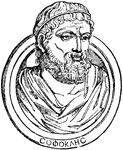
Sophocles
"Sophocles, the younger rival and immediate successor of Aeschylus in the tragic art, was born at Colonus,…
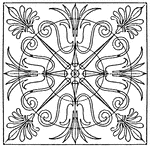
Greek Square Panel
The Greek square panel is found in Athens. This panel is divided into eight equal spaces that are decorated…
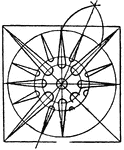
Greek Square Panel
The Greek square panel is found on the coffer of the Propylaea ceiling, the entrance to the Acropolis…
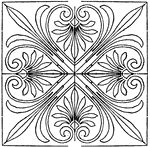
Greek Square Panel
The Greek square panel is found on the coffer of the Propylaea ceiling, the entrance to the Acropolis…
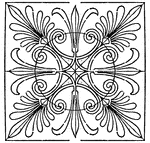
Greek Square Panel
The Greek square panel is found on the coffer of the Propylaea ceiling, the entrance to the Acropolis…
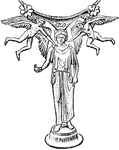
Statuette
"Bronze statuette (stand of mirror) wearing Chiton. From Athens." — Encyclopedia Britannica, 1893

Temple of Theseus
The Temple of Hephaestus and Athena Ergane, also known as the Hephaisteion or Theseion, is the best…
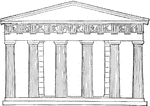
Thesium restored
"The Theseum is situated on a height to the north of the Areopagus, and was built to receive the bones…

Bust of Thucydides
"Thucydides, the greatest of the Greek historians, was an Athenian, and was born in the year 471 B.C.…

The Victors of Salamis by Fernand Cormon
Illustration of a painting of the ancient Greeks returning victorious from the Battle of Salamis against…
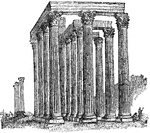
Temple of the Olympian Zeus
"Athens is said to have derrived its name from the prominence given to its worship of Athena by its…

